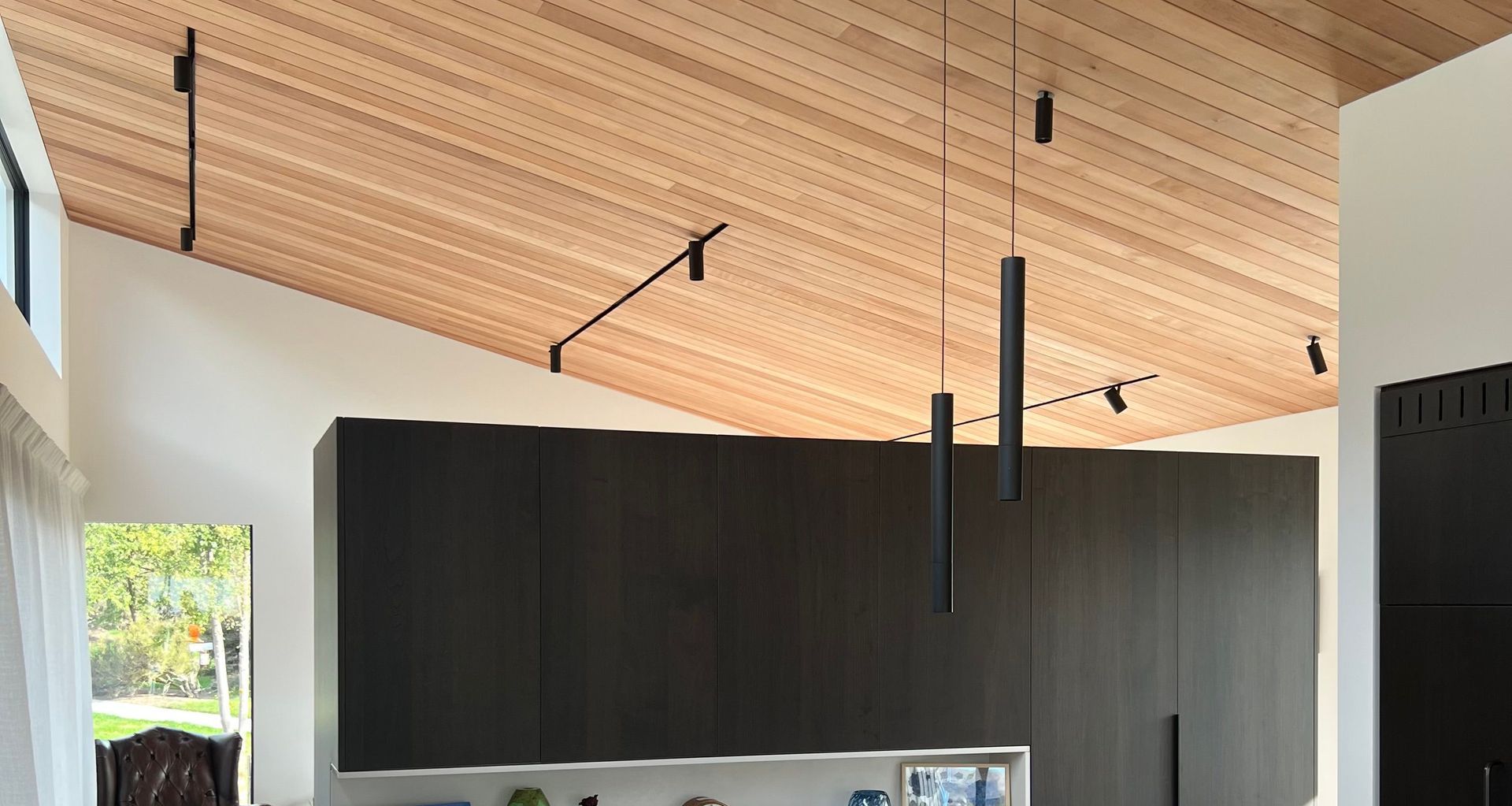A sustainable, native timber for architectural designs
Written by
20 February 2024
•
5 min read

Also known as New Zealand Silver Beech, Southland Maple Beech brings warmth and texture to interior projects. Predominantly used for wall and ceiling linings, the timber is FSC-certified and intertwined with the history of Aotearoa New Zealand – a source of inspiration for projects wishing to express cultural linkages to the land.
“The forests are a joint venture by a sawmill and forest management company, Lindsay & Dixon and Waitutu iwi. There are a lot of cultural linkages and significant historical importance and values that go into the management of the forests and the longevity and sustainability of the forest as well,” says Joe Lagan, product specialist at Timberline.
Approximately 12,500 hectares of Silver Beech is managed by Lindsay & Dixon in Western Southland, which Timberline then distributes and markets to the construction sector. The entire forestry operations are managed and operated under an approved Ministry of Primary Industries sustainable forestry management plan, which complies with the Forests Act 1949. This is paired with independent third-party certification through the Forestry Stewardship Council (FSC).
“Southland Beech is generally not as common as cedar and oak, but it has certainly been around longer; it probably just hasn’t been understood that it is readily available in commercial quantities,” says Lagan.

Honouring the New Zealand landscape with Southland Maple Beech in architectural projects
In architectural projects where the timber has been used, it’s easy to see the appeal.
Designed by Warren and Mahoney, New Zealand’s native forests provided the architectural inspiration for the Novotel adjoining Auckland International Airport.
Briefed to create a significant landmark with an unmistakably ‘New Zealand’ identity where guests would experience their first or last experience of New Zealand when arriving at the airport, it was important for the materials used in the Novotel to reflect the country’s natural beauty.
“We had an open mind at the beginning but we quickly learned that sustainability supported by international certification would be integral to the final material decision,” says lead designer Jonathan Hewlett. “We were able to fast-track the selection of native timber by virtue of our Wellington colleagues who had already had a tremendously positive experience with Lindsay & Dixon and Southland Beech.
“What really secured the selection of Southland Beech for this particular client was, however, its FSC certification. Against all other timber options, this was a key difference – ensuring integrity regarding the sustainability and milling of a native New Zealand timber.”
Southland Beech became a continuous and linking design theme throughout the Novotel interior, with decorative wall panels, door and ceiling veneers and major cabinetry items in all guest rooms made from the timber.

Using Southland Maple Beech in your next commercial or residential project
A dimensionally stable timber that machines well, a high-quality finish can be achieved with Southland Maple Beech with minimal sanding, allowing it to work well with stains, paints, polishes and glues.
“We're very happy to do sampling material. We can do different finishes on the surface such as distressed finishes or smooth finishes. We can also do all of the coatings.”
To allow time for testing and sampling, it’s important to engage the expertise of the team at Timberline early on in every project.
“There are a couple of projects in Queenstown at the moment and we've been working with architects and interior designers collaboratively for about six or seven months now to get all the finishes right to match the colour scheme,” says Lagan.
“The earlier we're engaged in the process and have an understanding of what you would like from us, the more we can assist – whether it's sampling or coating finishes.”
We can do different finishes on the surface such as distressed finishes or smooth finishes.
The Southland Maple Beech is available in various profiles, grades and finishes from Timberline, including:
- A contemporary wall lining profile for residential and commercial applications, the Southland Maple Beech Koru Wall Lining has a distinctive negative detail – intended for vertical applications, though it can be used in horizontal applications depending on the design. The lining is also available in a range of widths and thicknesses.
- Southland Maple Beech Rustic Wall Panelling is the perfect solution for creating ambience in an interior environment. The rustic grade is a fantastic utilisation of the whole tree with its fine textured surface. This surface is available with a wire-brushed or heavy-sawn finish, and its rustic features can be left natural or applied with a timber filler for effect.
- Along with its warmth and varied tones, Southland Maple Beech Ceiling Lining’s thermal and acoustic properties add to its appeal. The product can be supplied and installed in a range of traditional tongue and groove profiles, as battens, or as sawn boards depending on the desired aesthetic.
Learn more about using Southland Maple Beech wall and ceiling linings in your next residential or commercial project.